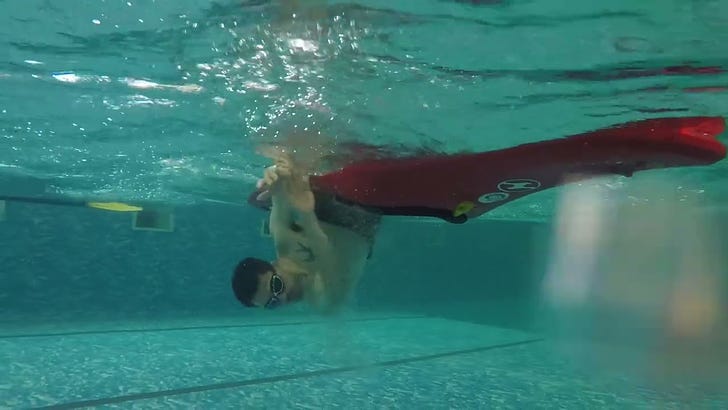“Capsizing is in itself not a problem for kayakers. For those with a solid roll, it's just a momentary dunking.”
——More Deep Trouble by Christopher Cunningham
The main safety feature of a kayak is the person paddling it. Skills like bracing, recovering, and rolling can prevent disaster and turn violent waters into a playground for the experienced paddler.
Contrary to what you might think, rolling isn’t hard. But there’s a huge gap between learning to get the roll right and mastering the roll to where you can’t get it wrong. Taking the time to develop a “bombproof” roll is an investment in safety and fun.
Pool sessions are a great way to isolate and drill each stage of the roll in a warm, safe, and controlled environment. Not every pool allows kayakers, but I’m lucky enough to live a short drive from one that does.
Yesterday, I spent some time at the Water School doing a one-on-one rolling workshop with Ciarán, their resident kayak instructor. I practiced in the school’s whitewater creek boat which is much harder to roll than my sea kayak and totally unforgiving of sloppy technique.
I learned a lot, and we got some epic GoPro footage.
The combat roll
Of course, the North Atlantic and the Irish Sea are nothing like a swimming pool. In a real-life capsize, you’re not going to get to assume the setup position and take a full breath.
“Needing to roll is usually a sign of failure to manage the conditions, and those same conditions will be there to greet you when you come up.”
- Sea Kayaking by John Dowd
A “combat roll” is the act of rolling in rough conditions following an unintended capsize. It doesn’t have to be pretty, it just has to work and set you up in a strong finish to deal with whatever’s happening back on the surface.
To drill my combat roll, Ciarán held on to the back of the kayak and thrashed and bucked it violently, churning up waves in the pool from every direction. I had to brace on both sides to stay upright. Eventually, a brace failed, and I was upside down in an awkward position with no time to get a breath. I had to feel my way into the setup and execute my roll.
A gentle art
Anyone who’s done Brazilian Jiu-Jitsu knows how effortless and smooth it feels to get a technique right. Rolling’s the same way. If you feel like you’re muscling through it, you’re doing it wrong.
With proper technique, the boat does most of the work and the paddle is just there for balance. One way to know if you’ve got the form right is to ditch the paddle and try a hand roll.
It’s unlikely you would ever have to hand roll in a real capsize, but it’s a confidence boost to know that you can roll without your paddle.
We also practiced rolling with one half of a split paddle——which you would have to do if you broke a paddle and ended up capsizing.
Slow your roll…
My main thing to work on is slowing down and taking my time to get the technique right. I try to always count to three underwater before I make my move. This gives the boat time to settle upside down——so I’m not working against the momentum of the capsize——and it helps me stay relaxed in case the roll fails, and I have to reset.
In the clip above, Ciarán puts me through an “around the world” drill. He rolls the kayak three times to get me nice and disoriented and then hands me the paddle to do a roll. I’m too hasty with my first roll, the setup is all wrong, and I stay under. I take my time on the second attempt and get it right.
Failing a roll (or two) might make you panic, but the success of your next attempt depends on being even more relaxed and focused.
The only way to get there is to spend a lot of time upside down.
Thanks for reading,
-Charlie
Thank you to Mike Jones for coaching and guidance.
Kokatat is the official gear sponsor of The Lap.
The lap will be fueled by Resilient Nutrition’s Long Range Fuel and bars.
Expedition coffee by 3fe.






